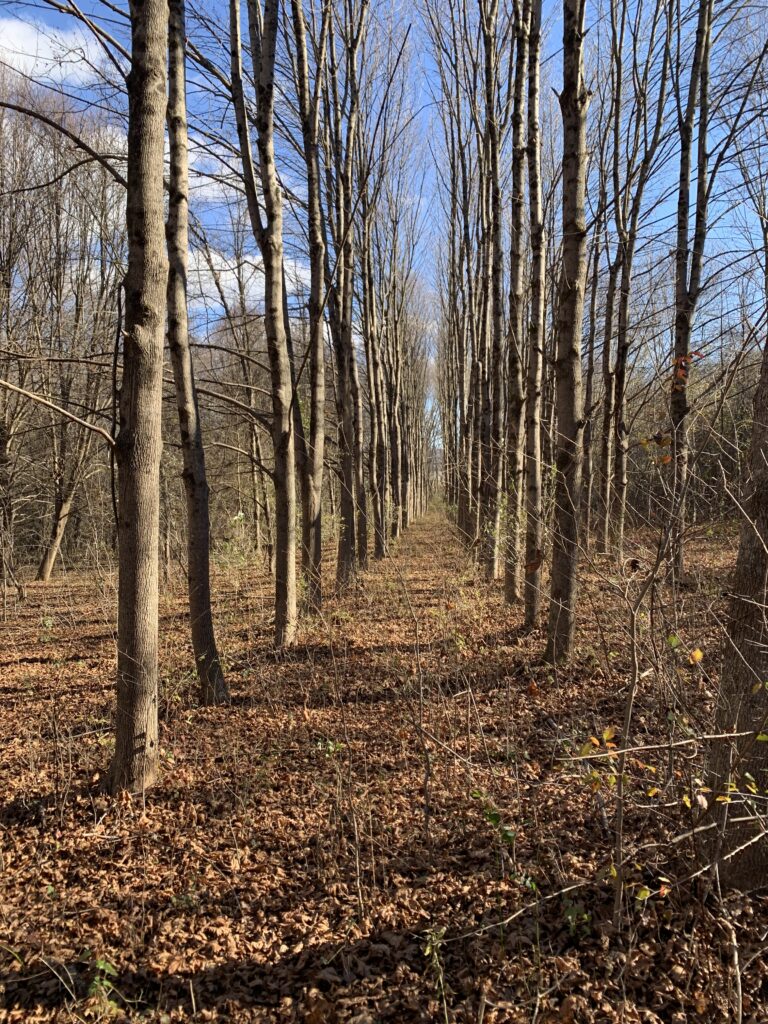Deep in the New Jersey countryside (yes, that does exist) lies a curious collection of strange relics of the not-so-distant past. A concrete bridge. Old foundations. An abandoned silo. Trees mysteriously planted in neat rows. What can we learn about the structures, phenology, and ecology that characterize this place? Read on to find out!
Phenology Spot Location

Photos of the Phenology Spot



Ecology and Phenology
The phenology of my location is little changed from my spot in Burlington. This area has seen similar temperatures to Burlington the last few weeks, and as such, the areas are generally aligned to the same phenological calendar. Like my spot in Centennial Woods, the leaves of the trees have fallen, and wildlife is apparing less abundant as the animals here prepare for a cold winter. However, the ecology of this place is very different from Centennial Woods. First of all, there are almost NO coniferous trees here. Unlike Centennial Woods, in which the towering white pines are a focalpoint of the location, I counted 5 coniferous trees at most. The abundance of maples and oaks forms a deciduous forest that dominates here. Secondly, I noticed that the understory here was thick with thorny brush. It was hard to step foot anywhere off trail for fear of being plunged with hundreds of thorns from bushes that towered well over head height. In Centennial Woods, however, thorns are kept to a minimum, and the brush that is most likely to be experienced is knee height. The understory in Centennial Woods is mostly composed of younger trees, which is a stark contrast to here in NJ, where trees are either fully mature or on their way to be, with no younger trees in sight (probably being choked out by the thick, thorny understory). Another contrast between NJ and Burlington deals with the soil and overlying organic layer. The tree plantation and surrounding forests in my NJ spot contribute little to replenishing soil — many of the fallen maple and oak leaves sat on top of the ground, not decomposing or breaking down. This was different from Centennial Woods, where I not only noticed leaves in various states of decomposition, but also branches and fallen trees covered in moss, representing a robust decomposition process. Overall, the homogenization of tree species, the thorny understory, and scant evidence of healthy soil formation leads me to conclude that the ecology of my spot in Centennial Woods represents a much healthier ecosystem than that which exists at my spot in NJ.
An Honorable Harvest Tribute
Thinking about how I wanted to represent my appreciation towards the land I roam around in, I thought a painted rock would be suitable. Instead of leaving it for someone else to take, placing it in a secluded spot to let the land claim it would represent the time and effort we must put in to respect and honor the land in ways that are not just for our express benefit. Using ecologically safe paint, I painted a ladybug on a small stone and placed it at the base of a tree. Hopefully, it will be representative of the enhanced biodiversity I hope to see in this location as the forest matures years from now.

